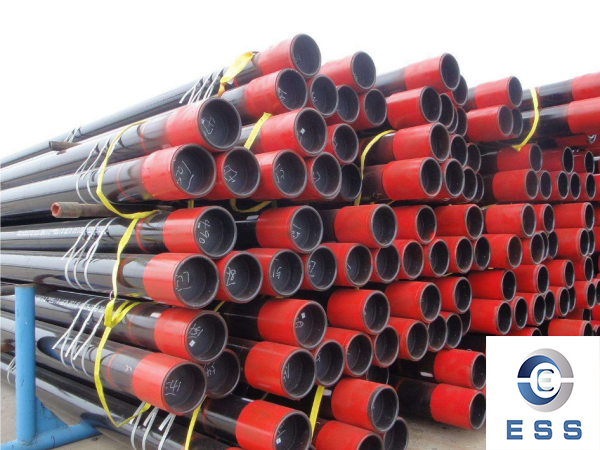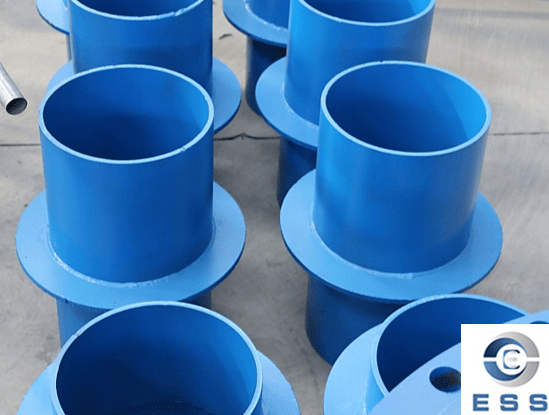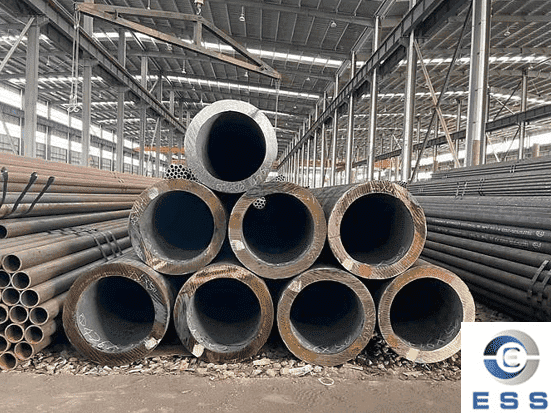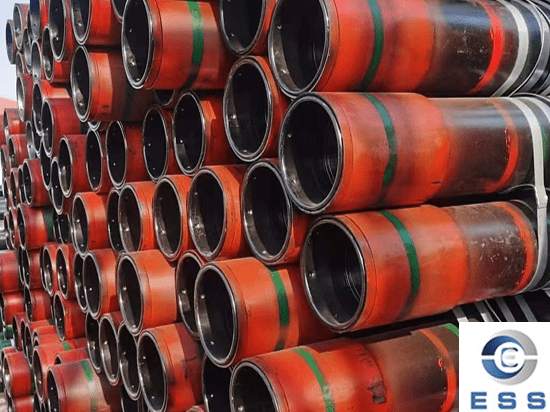Comparative analysis of seamless casing and ERW casing
According to the manufacturing method, steel pipes can be divided into two categories: seamless steel pipes and welded steel pipes. Among them, ERW steel pipe is the main variety of welded steel pipe. Today, we mainly talk about the two types of steel pipes used as raw materials for OCTG casing: seamless casing and ERW casing.
Seamless casing - casing made of
seamless steel pipe as raw material
Seamless pipe refers to steel pipes manufactured by four methods: hot rolling, cold rolling, hot drawing, and cold drawing. The pipe body itself does not have any welds.
ERW casing - casing made of
ERW pipe as raw material
ERW (Electric Resistant Weld) pipe refers to a straight seam welded pipe manufactured through high-frequency resistance welding process. The raw material steel plate (coil plate) of ERW welded pipe is made of low carbon micro-alloy steel rolled by TMCP (Thermo-Mechanical Control Process).

1.Outer diameter tolerance
Seamless steel pipe: The hot rolling forming process is used, and the sizing is completed at around 8000C. The raw material composition, cooling conditions and cooling status of the rolls of the steel pipe have a great impact on its outer diameter. Therefore, the outer diameter control is difficult to be accurate and fluctuates. Larger range.
ERW steel pipe: adopts cold bending and sizing through 0.6% diameter reduction. The process temperature is basically constant at room temperature, so the outer diameter is accurately controlled and the fluctuation range is small, which is conducive to the elimination of black buckles;
2. Wall thickness tolerance
Seamless steel pipe: Produced by round steel perforation, the wall thickness deviation is large. Subsequent hot rolling can partially eliminate the wall thickness unevenness, but currently the most advanced units can only control it within ±5~10%t.
ERW steel pipe: Using hot-rolled coils as raw materials, the thickness tolerance of modern hot-rolled strips can be controlled within 0.05mm.
3. Appearance
The outer surface defects of the blanks used in seamless steel pipes cannot be eliminated through the hot rolling process. They can only be polished off after the finished product is completed. The spiral path left after perforation can only be partially eliminated during the wall reduction process.
ERW steel pipes use hot-rolled coils as raw materials. The surface quality of the coils is the surface quality of ERW steel pipes. The surface quality of hot-rolled coils is easy to control and has higher quality. Therefore, the surface quality of ERW steel pipes is much better than seamless steel pipes. .
4. Ovality
Seamless steel pipe: Using the hot rolling forming process, the raw material composition, cooling conditions, and cooling status of the rolls all have a great impact on the outer diameter of the steel pipe. Therefore, the outer diameter control is difficult to accurately control, and the fluctuation range is large.
ERW steel pipe: It is formed by cold bending, so the outer diameter is accurately controlled and the fluctuation range is small.
5. Tensile test
The tensile performance indicators of seamless steel pipes and ERW steel pipes both meet API standards, but the strength of seamless steel pipes is generally at the upper limit and the plasticity is at the lower limit. In comparison, the strength index of ERW steel pipes is at its best, and the plasticity index is 33.3% higher than the standard. , the reason is that the performance of hot-rolled coils, the raw material of ERW steel pipes, is guaranteed by means of microalloying smelting, out-of-furnace refining, and controlled cooling and rolling; seamless steel pipes mainly rely on means of increasing carbon content, which makes it difficult to ensure strength and plasticity. a reasonable match.
6.Hardness
The raw material of ERW steel pipes - hot-rolled coils, has extremely high precision in controlled cooling and rolling during the rolling process, which can ensure uniform performance of all parts of the coils.
7. Grain size
The raw material of ERW steel pipe - hot-rolled strip coil is made of wide and thick continuous casting billet, which has a thick fine-grain surface solidification layer, no columnar crystal area, shrinkage cavity and looseness, small composition deviation and dense structure; in the subsequent rolling process Among them, the application of controlled cooling and controlled rolling technology further ensures the grain size of raw materials.
8. Anti-collapse test
ERW steel pipe is characterized by its raw materials and pipe making process. Its wall thickness uniformity and ovality are far better than those of seamless steel pipes, which is the main reason why its anti-collapse performance is higher than that of seamless steel pipes.
9. Impact test
Since the impact toughness of the base material of ERW steel pipes is several times that of seamless steel pipes, the impact toughness of the weld is the key to ERW steel pipes. By controlling the impurity content of raw materials, the height and direction of slitting burrs, the shape of the formed edges, the welding angle, and the welding speed , heating power and frequency, welding extrusion amount, intermediate frequency withdrawal temperature and depth, air cooling section length and other process parameters ensure that the impact energy of the weld reaches more than 60% of the base metal. If further optimized, the impact energy of the weld can be close to that of the parent metal. materials, resulting in seamless performance.
10. Blast test
The burst test performance of ERW steel pipes is much higher than the standard requirements, mainly due to the high uniformity of wall thickness and uniform outer diameter of ERW steel pipes.
11. Straightness
Seamless steel pipes are formed in a plastic state, and with a single ruler (3 to 4 times a ruler for continuous rolling), the straightness of the pipe end is relatively difficult to control;
ERW steel pipes are cold processed and have online straightening in the diameter reducing state. In addition, they are infinitely multiplied, so the straightness is better.
12. The amount of casing steel used in 120,000 meters of footage
The wall thickness of ERW steel pipes is uniform and its wall thickness tolerance is negligible, while the control accuracy limit of the wall thickness difference of seamless steel pipes is ±5%t, which is generally controlled at ±5~10%t. In order to ensure that the minimum wall thickness can meet the standard requirements and performance, the only solution is to increase the wall thickness appropriately. Therefore, for casing of the same specifications and weight, ERW steel pipes are 5 to 10% longer than seamless steel pipes, or even more, which reduces the steel consumption of casing per 10,000 meters of footage by 5 to 10%. Even at the same price, ERW casing virtually saves users 5 to 10% of purchasing costs.
Read more: Specifications and dimensions of oil casing













 Eastern Steel Manufacturing Co.,Ltd not only improve product production and sales services, but also provide additional value-added services. As long as you need, we can complete your specific needs together.
Eastern Steel Manufacturing Co.,Ltd not only improve product production and sales services, but also provide additional value-added services. As long as you need, we can complete your specific needs together.










